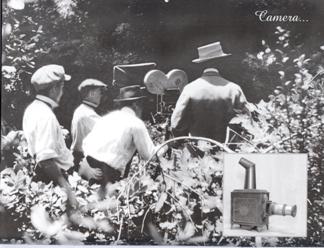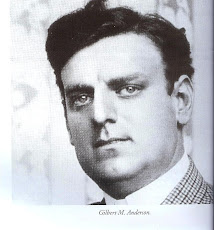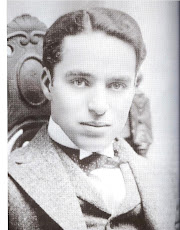
Quiet on the set...QUIET ON THE SET! Action.....Roll 'em!
The plot...oh yes,every story must have a plot, and of course a "Colossal Blog Production"(CBP)is no exception! So why is this topic worth exploring? Why should we care about movies that were made nearly 100 years ago? Is it still relevant to our lives in this modern age of CD's,DVD's, portable movie players, and Netflix?
The answer is very simple really. But first, let's ask ourselves, "Why do we associate movie making with California?" I think that is a good place to start our quest for answers to your questions. As your (part time) studio guide today I will be glad to guide you in this marvelous journey through time. We will be especially interested in the time period between 1896 and 1916, when the cameras stopped rolling and Essanay Studios finally closed its doors forever in Niles Canyon. Later, Los Angeles became the hub of movie making in California and a new era of talking pictures was soon to arrive.
I do have a busy schedule running this blog production company so let's begin our tour. California is about much more than a composite of crowded sandy beaches, "Gidget" surfing the waves while basking in the sunshine,scenic topography,fancy houses and exotic cars,extremely diverse cities(Berkeley,S.F.and L.A. are great examples),exclusive exports(Oranges and computers!),Beach Boy music(Don't forget Jan & Dean!), movie stars (not to forget mentioning our "Governator", Arnold), and of course the rest of our very own "unique" people. It is both a place and a dream for people to visualize,visit,and stay if only in their minds. Even the name "California" has mystical origins.
As we enter our imaginary sound stage, we view our set; Please...relax...sit in my Director's chair and watch what's unfolding in your mind's eye. Cigar? I have one of Broncho Billy's favorites! A slug of gin perhaps? OK,but first...MAKE-UP!! Places everyone! Hurry up! Lights! Girls enter stage right!Take One!
The time is circa 1500's. We are on a beautiful tropical island with gorgeous,and topless(ok,I put that in to get your attention!)black women Amazons that are ruled by the mysterious Queen Califa. These ladies were known for their robust, healthy bodies basking in the warm sun (now are you getting the idea?). They had spears and scepters made of pure gold that came from a nearby mine. Eventually this magical place became known as "California" thanks to our Spanish script writer named Garci Rodriguez de Montalvo. In 1510 he wrote a romance novel, "Las Sergas de Esplandian (Adventures of Esplandian). Honestly,even I could not make something up this good!His book is what inspired Hernan Cortez to explore the coast of "New Spain" in the 1530's, and claim for Spain the land which is now our state of California. The Spanish named their newly discovered land "Las Californias", then later it became "Alta California". So finally, this fictional land became a real place.
OK! strike the set now! Follow me please to the next studio. "The unwritten Law" is being filmed(see explanation below).We're just in time. Careful! Watch your feet! I don't need a virtual law suit!
California which was once thought of as a mystical island was in fact a living paradise. (However the glamour girls came much later!) The point I'm making here is this place was and still is a land of dreams and fantasies, inhabited by real people. It is no wonder why the magic continues to happen here in our studios, on film, and why the movie entertainment industry ended up here centuries later.
Once established, and especially after the 1849 Gold Rush, California became the west coast mecca for business, agriculture, tourism and eventually film making. ("California, An Interpretive History" by James Rawls p 1-16). It is very important for me to note the contributions to California's economy, and the notoriety of the stars that made motion pictures here,but there is an even more important issue at stake. The movie industry made a huge contribution in preserving California's history by reflecting the attitudes, styles, politics and our way of life through film.It is only through this medium that we can visually look into the past. These films are the time machines in which we can interpret as well as be entertained by our own history. As such we will examine the personalities and characteristics of the actors, the scripts,movie titles,and the stories they continue to tell us. This is one of the reasons I have undertaken this project.
Their triumphant stories of good over evil, generosity vs. selfishness, greed and avarice vs. charity, love overpowering hate are their legacy. They still live in our hearts today. Through the looking glass of a film camera any historical time period can easily be re enacted, and life's continuing stories can be witnessed on the silver screen. How else can one see what San Francisco looked like before the 1906 earthquake? Only through the movies can you witness how San Francisco became a bustling Gold Rush town,and be there during "The Great Train Robberies" of the early 20th century. You can place yourself in the Old West,or comment on the political satire of Charlie Chaplin when you see him appearing in "The Tramp" c.1915. Most important of all,through film you can experience the feeling and emotion of an historical event as if it happened yesterday instead of "yesteryear".
Another reason I chose this topic is because much of it happened right here! Film making is a documentation of local northern California San Francisco Bay Area history in itself. As such, it should be preserved for our enjoyment and utilized to educate future generations about who we are as Californians today. What we see on film is the mystic roll call of those that will come no more, but their message lives on. I too wish to capture some of the romance of California in the novel de Montalvo wrote in another golden age,so long ago.
Fade out on camera 2...Cut! That's a wrap for today!
Director's note: Pictured above are actors William Pike and Albert Morrison in a scene from "The Unwritten Law",1916; California Motion Picture Corporation. This film was based on a true crime story of the Stanford White/Harry Thaw murder case. (Photo donated to the Marin History Museum by Roy Farrington.)





.jpg)

.jpg)
